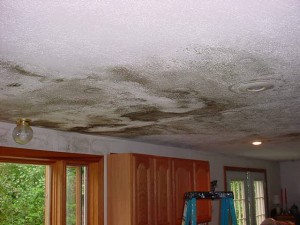How to Dry Out a Water-Damaged Building
 Water damage can cause major losses in your house or at your workplace. Statistics indicate that over 98 percent of basements will experience this problem during their lifespan. The average cost of a home water damage insurance claim is approximately $7,000. The worst part is that homeowners insurance policies usually don’t cover water damage caused by bad weather. The best way to minimize losses is to have a disaster preparedness plan in place.
Water damage can cause major losses in your house or at your workplace. Statistics indicate that over 98 percent of basements will experience this problem during their lifespan. The average cost of a home water damage insurance claim is approximately $7,000. The worst part is that homeowners insurance policies usually don’t cover water damage caused by bad weather. The best way to minimize losses is to have a disaster preparedness plan in place.
The Restoration Process
Drying out a water damaged building is difficult and time consuming. Depending on the severity of damage, you can either do it yourself or call a professional. The first step is to open the doors and windows to ventilate the area. Allowing natural ventilation in case of water damage is better than using hot air power drying systems because they may cause further damage to the building.
Before starting the water damage restoration process, check all power lines and then turn them off. Safety must come first. Make sure there is no odor of leaking natural gas or LP. Be aware that water may be contaminated with bacteria and dangerous chemicals that pose major health risks. Thus, it’s recommended to protect your mouth, eyes, hands, and body during the clean up process. When you’re done, wash your hands with disinfectant to remove bacteria and waste. If your house has been severely damaged, contact an expert to assess the area and take samples.
Take photos of the damaged areas before cleaning up the water. You’ll need proof of damage when negotiating with the insurance company. Repair the roof and windows temporarily to prevent water from entering the house. The repairs you make should last at least six months. For best results, use 30- or 90-pound felt paper, tarpaulin, or plywood covered with tarpaper.
Property Damage Restoration Tips
It’s recommended to begin drying out your home in the attic. Remove wet insulation and any water soaked items because they may hold moisture and cause cracking in the floor and ceilings. If your electrical system is working, turn on the attic fan to allow fresh air to circulate.
Inspect each room carefully. Pay attention to the ceilings and check for loose plaster, bulges, mold, and mildew. Remove wet rugs, put aluminum foil between wet carpets and furniture, and open closet drawers to speed up drying. Transport computers and appliances to a dry spot. Do not enter rooms where ceilings are sagging. Keep children and pets out of the affected areas. In case of black water damage, treat all affected surfaces and furnishings as toxic.
Remove mold and mildew using disinfectant or Clorox. Wash down wooden items, such as the doors and mantels. If the floors are covered with mud, remove it with fresh water. Furniture, paintings, photos and other household items should receive special treatment to minimize damage. Do one thing at a time and allow air to circulate the house. Forcing the building to dry too quickly will make things worse. If you’re not sure what to do, call a water damage restoration company.
Reference: http://orange-restoration.com/